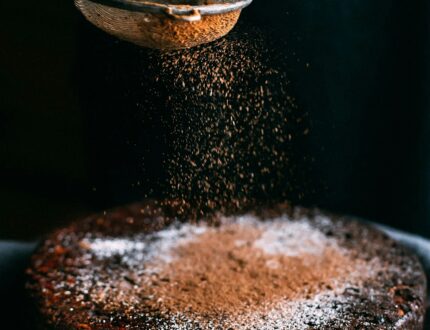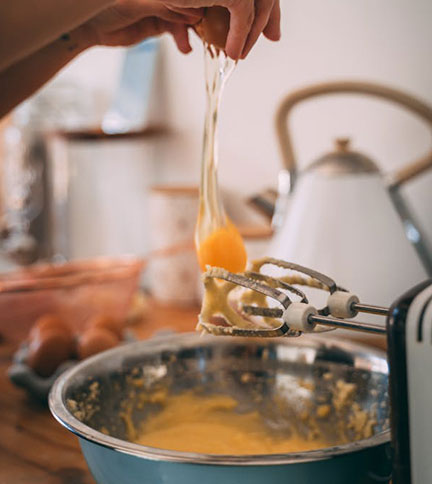As a professional cake decorator, pollen season shouldn’t mean a decline in your artistry or productivity, nor should it stop you creating show stopping cakes. When seasonal allergies threaten your precision work, these practical strategies will help you maintain both creativity and output during the most challenging months of the year.
Understanding Seasonal Timing & Impact on Your Work
Pollen seasons follow a predictable pattern that directly impacts your decorating precision:
- March-May: Tree pollen season (oak, birch, pine) often initiates the first wave of symptoms
- May-July: Grass pollen reaches peak levels, typically causing the most intense allergic reactions
- June-September: Weed pollen (especially ragweed) extends the challenging period
For professional decorators, understanding your local pollen calendar is essential for business planning. Many cake businesses experience productivity dips when decorators struggle with symptoms during peak seasons. Your local allergy clinic can provide regional pollen forecasts that help you anticipate particularly challenging days for detailed work.
This is particularly problematic because wedding and celebration seasons often coincide with peak pollen counts. Just when your order book fills with elaborate designs, environmental conditions conspire against your steady hands and clear vision.
Workspace Optimization for Professional Standards
Creating an allergen-minimized environment is crucial for maintaining professional-level precision:
Physical Space Setup:
- Install commercial-grade HEPA filtration in your decorating area – this investment pays off quickly in maintained productivity and reduced sick days
- Position air purification between windows/doors and your primary workstation to create a filtered pathway for any incoming air
- Establish separate workspaces for different activities, keeping dough preparation (with airborne flour) away from detailed decorating areas
- Consider installing washable wall surfaces and specialized flooring that doesn’t trap allergens
Work Scheduling Strategies:
- Schedule your most detailed decoration work during lower pollen count hours (typically mid-afternoon or after evening pollen release)
- Schedule outdoor-themed cake projects for times of the year when pollen counts are lower.
- Build additional time buffers into projects during peak seasons to accommodate potential symptom flares
- Create a designated “clean workspace” with systematic surface cleaning protocols between projects
Many professional bakeries report that these environmental modifications pay for themselves quickly through maintained productivity during allergy seasons when competitors often struggle with delayed orders or compromised quality.
Professional Symptom Management for Steady Hands
Your hands are your primary tools – shaky, sneezy decorators can’t achieve the precision clients expect from professional work.
Strategic Allergy Medication Approach: Professional decorators report best results when:
- Taking non-drowsy allergy medication 60-90 minutes before beginning detailed work
- Selecting formulations specifically designed for steady hands (many antihistamines cause subtle tremors that affect piping precision)
- Creating a medication schedule that maintains coverage through long decoration sessions without breakthrough symptoms
- Working with an allergy specialist to develop a medication strategy specifically for occupational needs
Many professionals keep backup allergy medication on hand for unexpected symptom flares during critical project phases. The most successful decorators view their medication strategy as part of their professional toolkit rather than merely symptom relief.
Environmental Body Controls:
- Use cooling neck wraps during prolonged decorating sessions to reduce inflammation
- Consider specialised protective eyewear during precise piping work if eye symptoms are prominent
- Maintain additional hydration during allergy seasons to support respiratory membrane health
- Schedule brief outdoor exposure breaks to acclimate your body to current pollen levels

Photo by Lindsay Cotter
Decoration Techniques Adapted for Allergy Season
Those beautiful, fresh flowers traditionally used as cake toppers can trigger symptoms when you need steady hands most. Consider these professional adaptations:
- Pre-prepared edible flowers processed in a separate area from your main workspace, then sealed with food-safe glazes to prevent pollen transfer
- Advanced piping techniques that mimic fresh greenery and create botanical elements without allergen exposure
- Sugar craft methods that replace fresh elements with remarkably realistic alternatives
- Creating protective “sealant” glazes that prevent environmental allergens from contacting food surfaces
Many top decorators now design intricate edible embellishments specifically for allergy-conscious clients, turning a limitation into a market advantage and signature style. These designs often incorporate seasonal themes while avoiding the actual seasonal allergens.
Materials Innovation:
- Experiment with pre-tinted bases that require less detailed work during high symptom days
- Develop a repertoire of designs that allow for “good hand days” and “challenging hand days”
- Create template systems that maintain your design aesthetic while requiring less freehand work
- Incorporate personal touches through texture rather than intricate piping when symptoms flare
Client Communications and Business Positioning
Educate clients on why certain seasonal design adaptations might benefit their events. Recent consumer research shows increased willingness to pay premium prices for allergen-conscious cakes, especially for outdoor events where environmental controls are limited.
Professional decorators who position themselves as seasonal allergy experts often discover an underserved market niche. Your personal experience navigating these challenges becomes a valuable business differentiator and marketing opportunity.
Consultation Strategies:
- Develop a seasonal portfolio that subtly shifts design emphasis away from allergen-heavy elements
- Create sample boards showing alternative decorative approaches specifically for allergy season events
- Offer specialised packaging that protects completed cakes from environmental allergen exposure during transport
- Build client education about seasonal considerations into your consultation process
The Professional Advantage
By implementing these strategies, professional cake decorators can maintain their artistic standards and production schedules throughout allergy seasons. Rather than allowing seasonal allergies to impact your business, transform this challenge into an opportunity to showcase your adaptability and commitment to consistent quality.
The most successful professionals view allergy management not as a limitation, but as another aspect of the specialised expertise that separates amateur from professional cake artistry – regardless of what’s blooming outside your bakery door.


